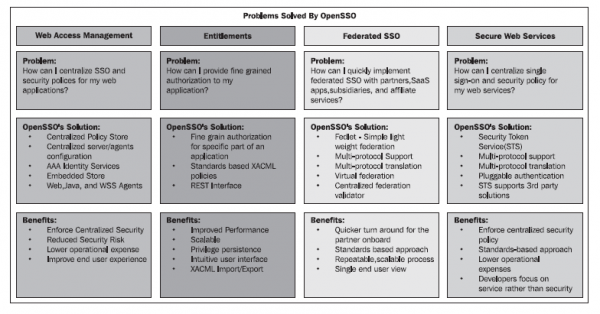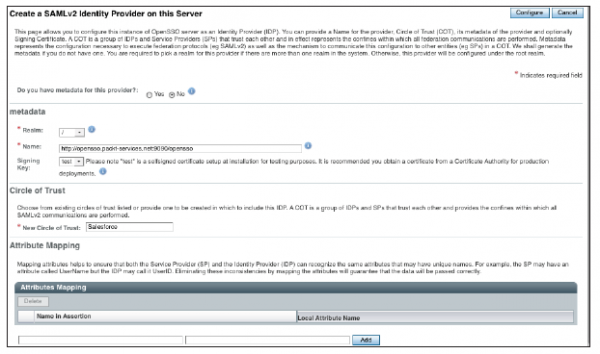For those of you familiar with OpenSSO / OpenAM, you probably know the online documentation is mediocre and that there exists few other options to ramp on this technology. Packt Publishing sent me a free copy or ecopy of the OpenAM book since I had blogged about OpenSSO earlier. The book by Indira Thangasamy (LinkedIn profile, PacktPub profile) can be found on the Pact Publishing site. Here’s some more information about it and what I like and dislike
First off, Indira is a tester by trade and while I would not want that job, it produces people who are very detail oriented and who do not let simple things slide. This helps him in the book because when he introduces a concept, he doesn’t just state it and move on. If you haven’t heard about SAML before, he explains it. If you have heard about key concepts behind the four main things OpenSSO / Open AM does, he explains it. For a person whose coding days are far behind him, I appreciate it.
Indira does a great job describing the history and basic components, including what’s new in version 9. As with the rest of the book, some of the language is stunted or includes some incomplete sentences. Since it’s a technical book, it’s easy to get past the few paragraphs that contain this language. In other words, you see some of the errors but it’s not that big a deal.
He also does a great job of walking you through the steps necessary to get the open source build up and running. This this involved downloading the binary and building it along with getting a variety of shared libraries installed, it’s pretty helpful. He also takes into account you might have the supported code from Oracle. had previously stated that Oracle no longer supports OpenSSO but according to Indira, OpenSSO is supported and they have provided some patches. for version 8. Forgerock.com provides a support model for OpenAM version 9.
Throughout the book, he provides a wide range of screen shots to help you through each task. This helps because at 272 pages, the book hits almost everything. From what I can tell, the author tried to be as comprehensive as possible in explaining what OpenSSO / OpenAM does and does not do. All of that said, OpenAM is still a technical book. The author takes care to explain as much as possible but you will need to have some basic knowledge of what authentication management, SSO, and other concepts mean.
Other things that the book does well include:
- Plenty of code or arguement examples. OpenSSO has a powerful command line interface (CLI) and Indira shows you the power of it with specific examples. Keep in mind that as you get deep into using this tool, the CLI will probably become your best friend.
- A number of highlights that further explain concepts
- Neatly organized tables to logically explain information
- Diagrams to explain architecture, process flows, and other information where a picture is worth a thousand words
Summary
If you are looking for a book that explains the ins and outs of OpenSSO / OpenAM, this is it. I’m not a complete security expert but this book contains a lot of information on what the tool can do. The author does not limit himself to just what you see on the GUI and provides plenty of examples on how to do a variety of tasks including how to setup SSO with Google Apps and Salesforce.com. In addition, he provides plenty of tables, config examples, and screenshots as necessary to walk you through specific tasks.
In spite of some obvious grammatical errors, I’m going to recommend it to several people I know who use SSO to manage their corporate infrastructures.
Again, here’s the link if you are interested.



